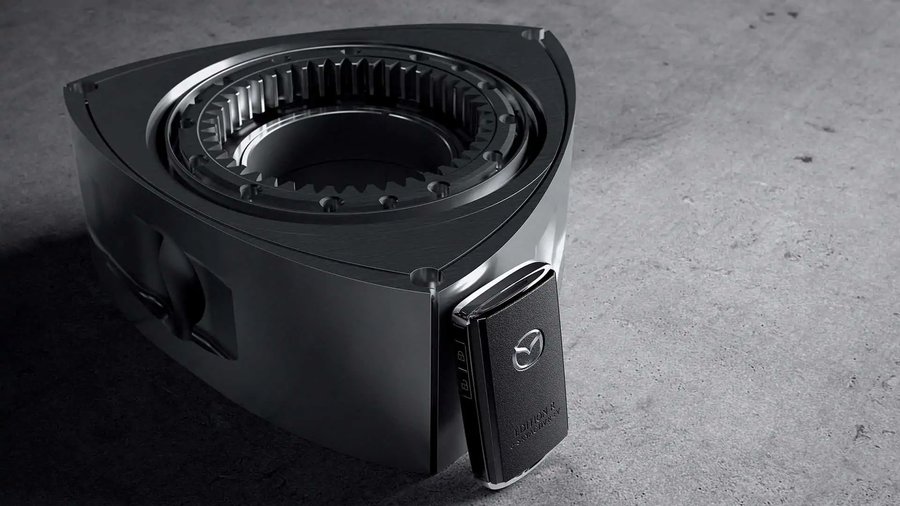Mazda Restarts Rotary Engine Mass Production After 11-Year Hiatus

Rumors about the return of the rotary engine had been swirling around the Internet for years before Mazda made it official in January when it unveiled the plug-in hybrid small crossover with a complicated name: MX-30 e-Skyactiv R-EV. Fast forward to June 22, mass production of the unusual gasoline engine serving as a range extender commenced at home in Japan at the company's Ujina Plant No. 1 in Hiroshima.
Coincidentally, the beloved RX-8 went out of production 11 years ago, in June 2012, when the last of the Japan-only 1,000 Spirit R examples was built. To date, the Zoom-Zoom company has assembled 1.99 million vehicles equipped with a rotary engine. Numerous patents have revealed that Mazda hasn't given up on the idea of a new sports car with a rotary engine. However, there's a long way from patenting a technology to putting it into production on a road-going car, so don't get your hopes up too high just yet.
At the beginning of the year, the assistant manager of the powertrain development division said the "rotary is our symbol." Yoshiaki Noguchi went on to say a performance application remains "a dream" but added now it's not the right time. Even though the achingly beautiful RX-Vision concept illustrating a rotary-powered sports car is already eight years old, enthusiasts certainly wouldn't mind an identical production version. It did go on sale, but only as a scale model.
Mazda's first rotary engine application was in the 1967 Cosmo Sport 110S with its two-rotor Wankel making 110 horsepower. It remains to be seen whether its modern-day equivalent with an 830-cc displacement feeding off of a 50-liter gas tank will be installed in other models or only the MX-30 e-Skyactiv R-EV will get it. In the crossover, the single-rotor engine producing a mighty 74 horsepower has no mechanical connection to the wheels since it acts as a generator.


